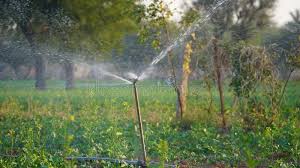GREEN REVOLUTION IN INDIA- ITS IMPACT
INTRODUCTION
Green Revolution in India occurred in 1965-66, when Indian agriculture was evolved into commercial and industrial system through adoption of new technology. And, as a result increase in food grain production in India; especially in state of Punjab, Haryana & Uttar Pradesh.
- The use of High yielding Varieties (HYV) of wheat and use of fertilizers and agro-chemicals along with new farming technique led to the increase in production that made the country self-sufficient in food grains.
- The main credit goes to geneticist Dr.M.S. Swaminathan who is also known as Father of Green Revolution in India. He was awarded by World food Prize in 1987 for his remarkable contribution.
- In 1965, high yielding varieties of wheat e.g. Lerma rojo 64 A & Sonora 64 that were imported from CIMMYT, Mexico; released for general cultivation in India and brought green revolution.


HISTORY OF GREEN REVOLUTION
- The term “Green Revolution” was first used by William S. Gaud in 1968 who noted the spread of the new technologies and developments in the field of agriculture.
- Green revolution was a revolution in the field of agriculture that occurred during decade of 1960, that led to increased agricultural production worldwide particularly in developing countries.
- This revolution was result of adoption of new technology more particularly in cereal crops like wheat and rice; especially in “wheat” i.e dwarf wheat.
- Mexico was the birth place and recipient of green revolution knowledge and technology. The ford foundation and the Rockefeller foundation both were the center of development in Mexico in the leadership of Norman E. Borlaug (Father of green revolution). For his great contribution, he was awarded by Nobel Peace Prize in 1970.
The factors of Green Revolution are as follow:
- Use of High yielding Varieties (HYV)
- Use of chemical fertilizers & Agro-chemicals
- New method of cultivation
- Farm mechanization
All these set of adoption led to occurrence of green revolution as a whole.
IMPACT OF GREEN REVOLUTION
- The green revolution led to increase the production heavily and great economic prosperity too. Punjab was the first place in India where it introduced.
- The farmers income were increased very much and that forced other states to adopt it.
- It also boost the agricultural economy in India. During 1964-66, India was facing starvation due to severe drought and fast growing population. Productivity and quality as well as quality of input were very poor and meanwhile these factors forced green revolution in India.
So the merits and demerits of green revolution are as follows:
Merits:
- Increase in production and productivity due to commercial use of high yielding varieties.
- Farmers Income were increased by 60-70% in India more particularly in Punjab that led to aspire other states to adopt the new technology.
- It boosted the food grain production and Indian economy too with respect of agriculture.
- It made the India self-sufficient in food grains. Per capita availability of cereals increased.
- Adoption of new methods of cultivation and new technology.
- Industrial growth- farm mechanization led to demand of agricultural implements and growth of agro industries as well.
- Green revolution encouraged capitalistic farming and change the attitude of farmers towards commercialization.
- It also reduce the burden of importing food grains.
Demerits:
- Environmental damage- Excessive use of chemical fertilizers and pesticides spoiled the waterways and polluted very badly as a result many beneficial insects and wild lives were killed. Rampant irrigation practices caused soil erosion.
- Introduction of high yielding varieties, chemical fertilizers and pesticides, irrigation system forced the rural farmers to take loans on high interest rate.
- Loss of Biodiversity– dependence on few crops led to loss of biodiversity
- Loss of fertility of soil due to excessive use of chemical fertilizers.
- It also led to regional disparities in India.
Read More……..
INTEGRATED FARMING SYSTEM
WHAT IS ORGANIC FARMING
TYPES OF FARMING- SYSTEM OF FARMING
TYPES OF FARMERS-GOVERNMENT INITIATIVES
MULCHING MEANING- TYPES & USAGE
SOIL PROFILE- DIFFERENT HORIZONS